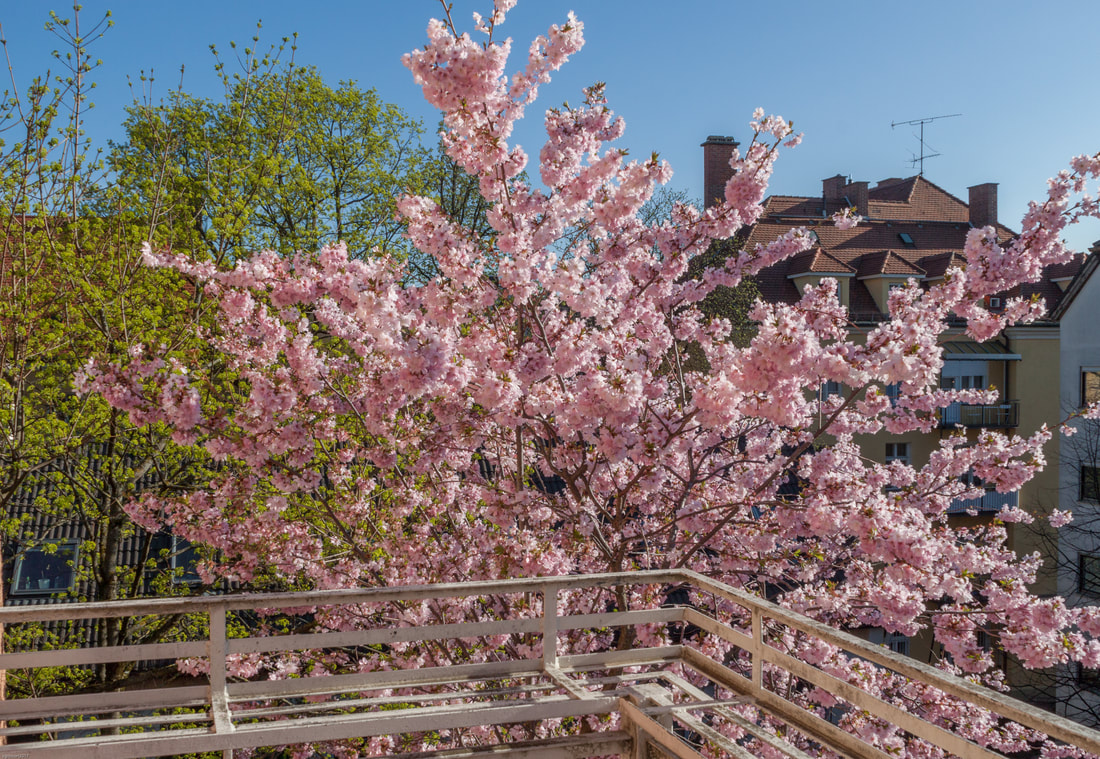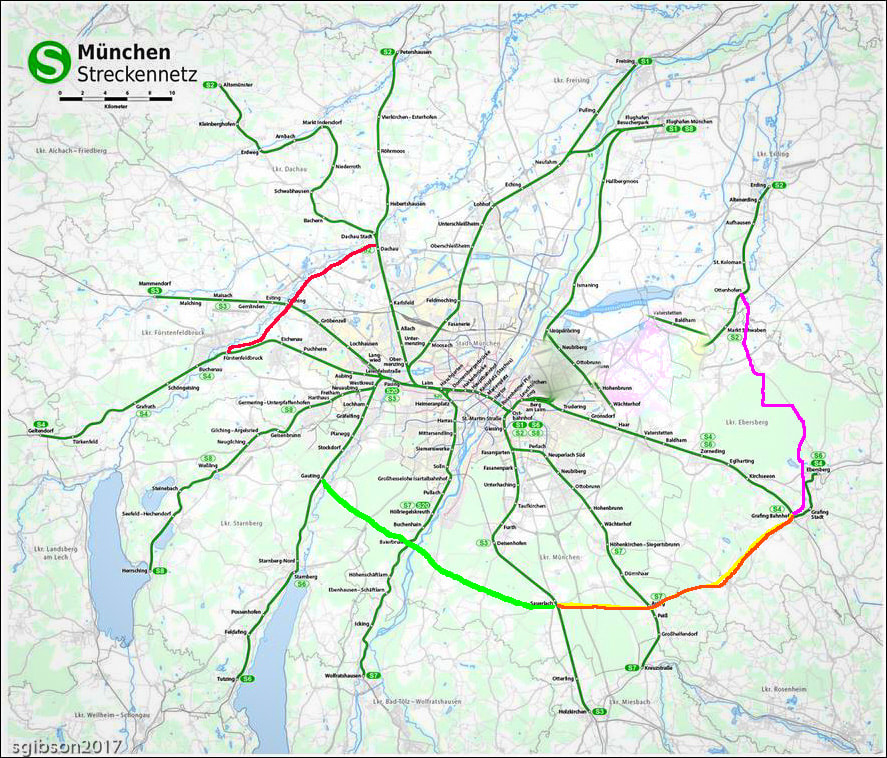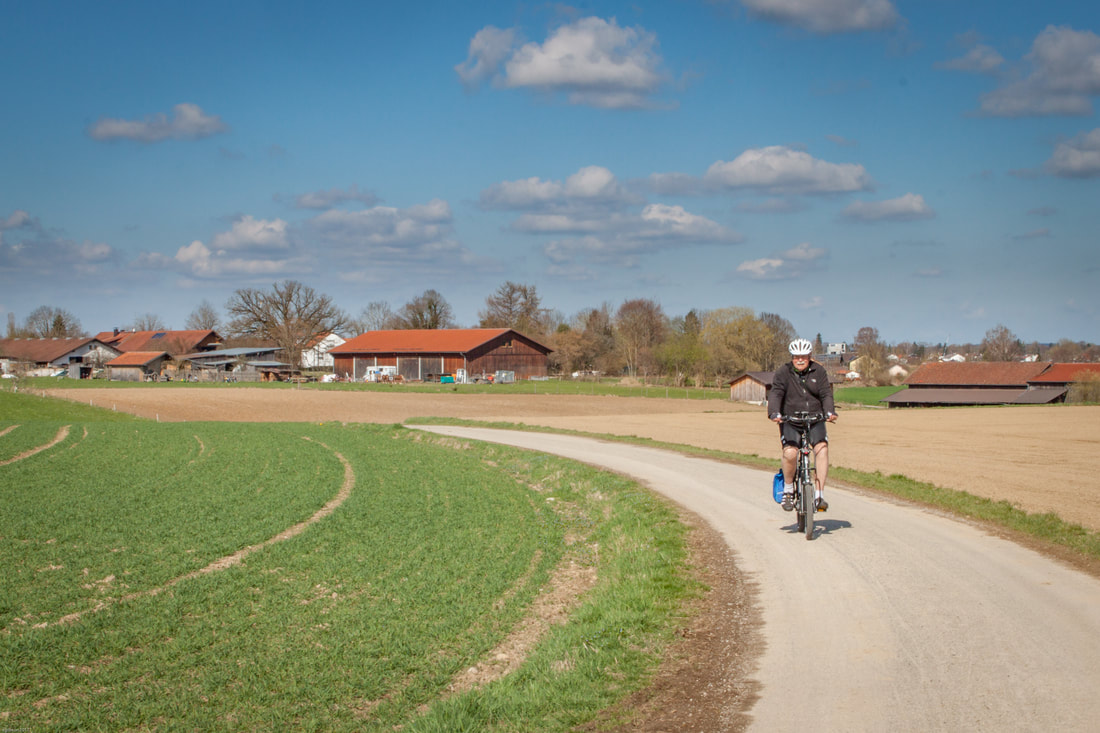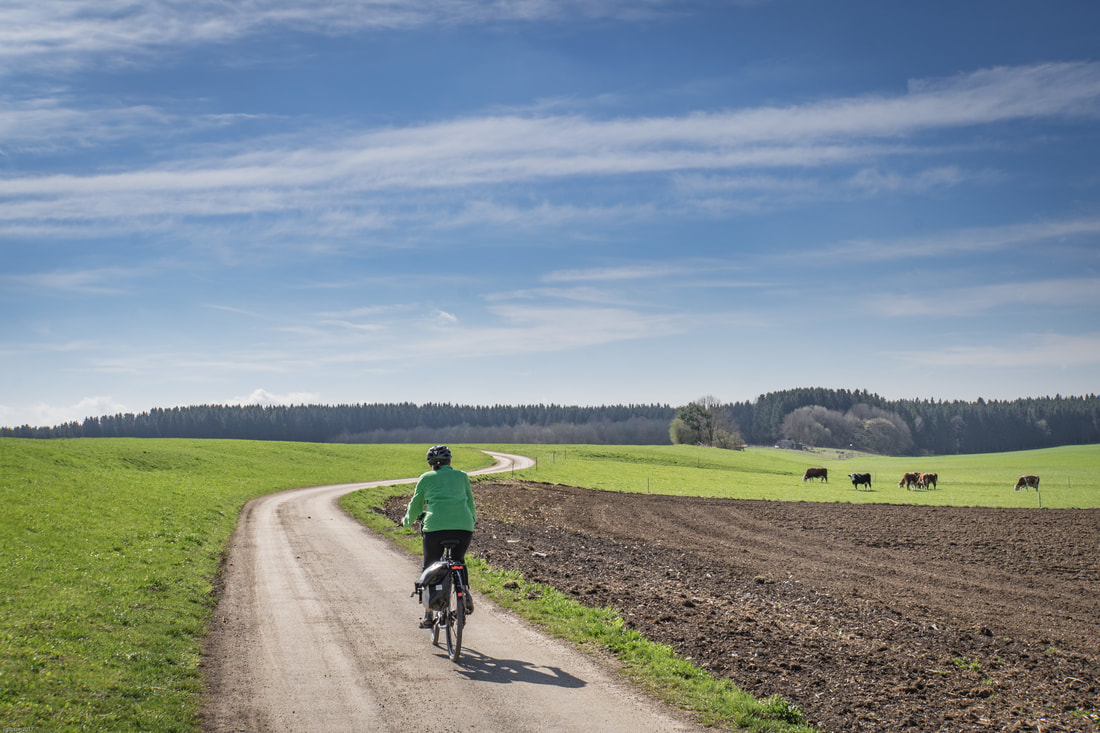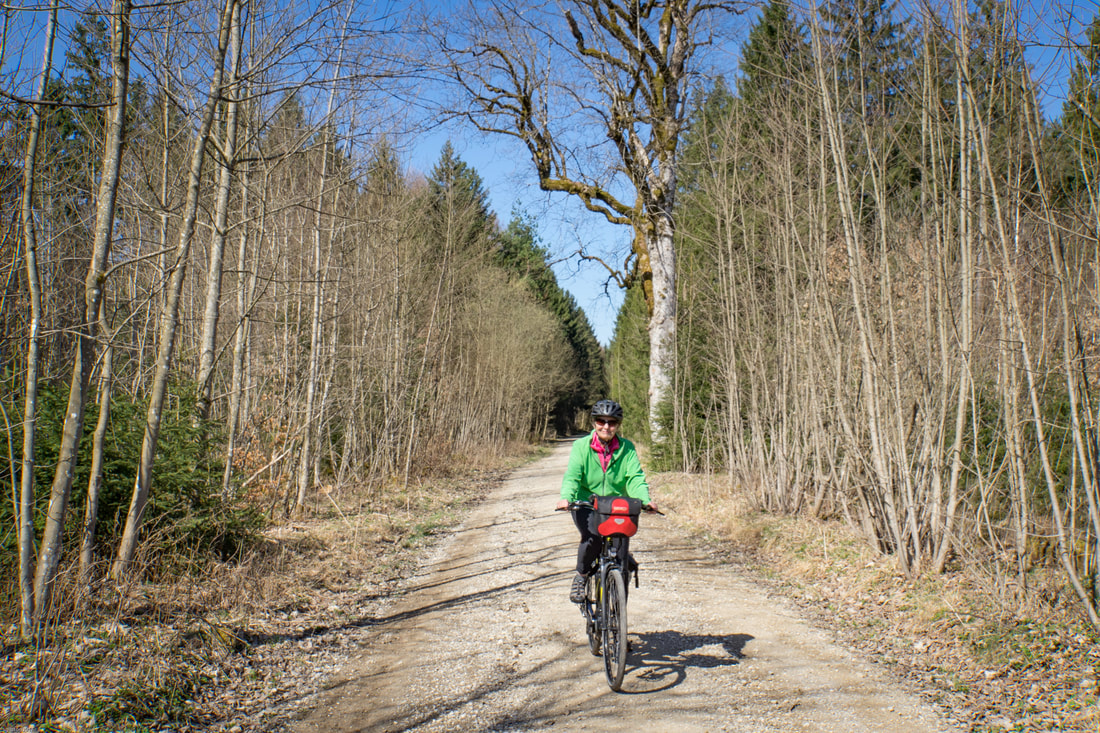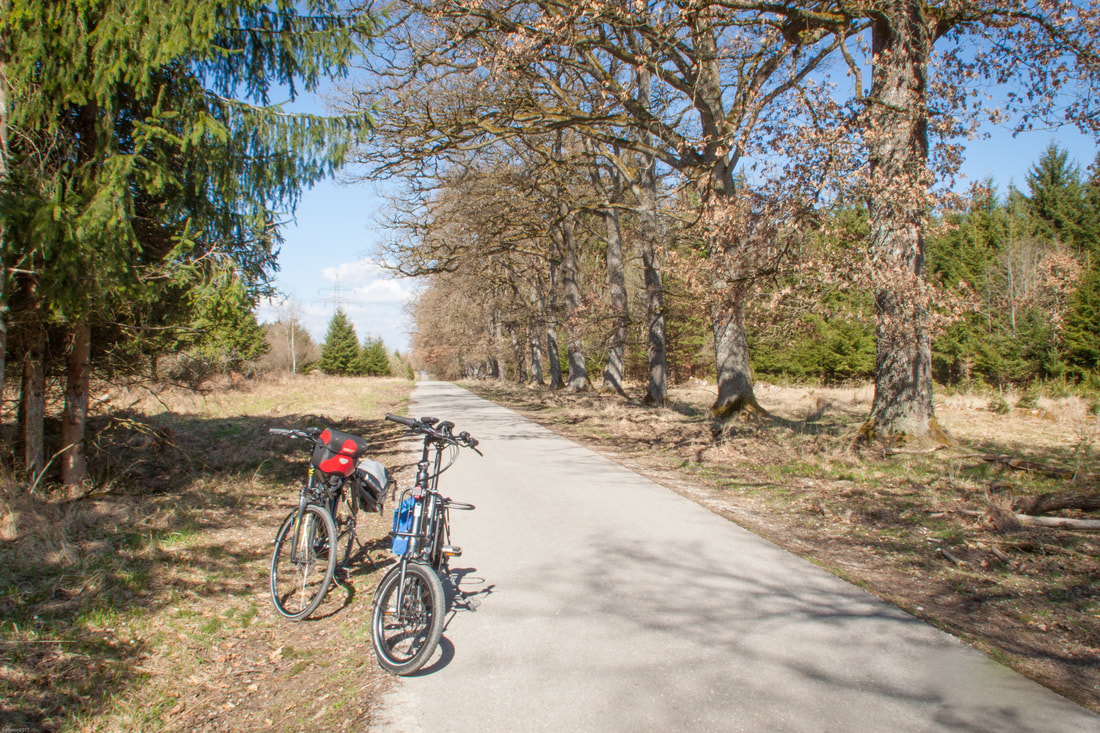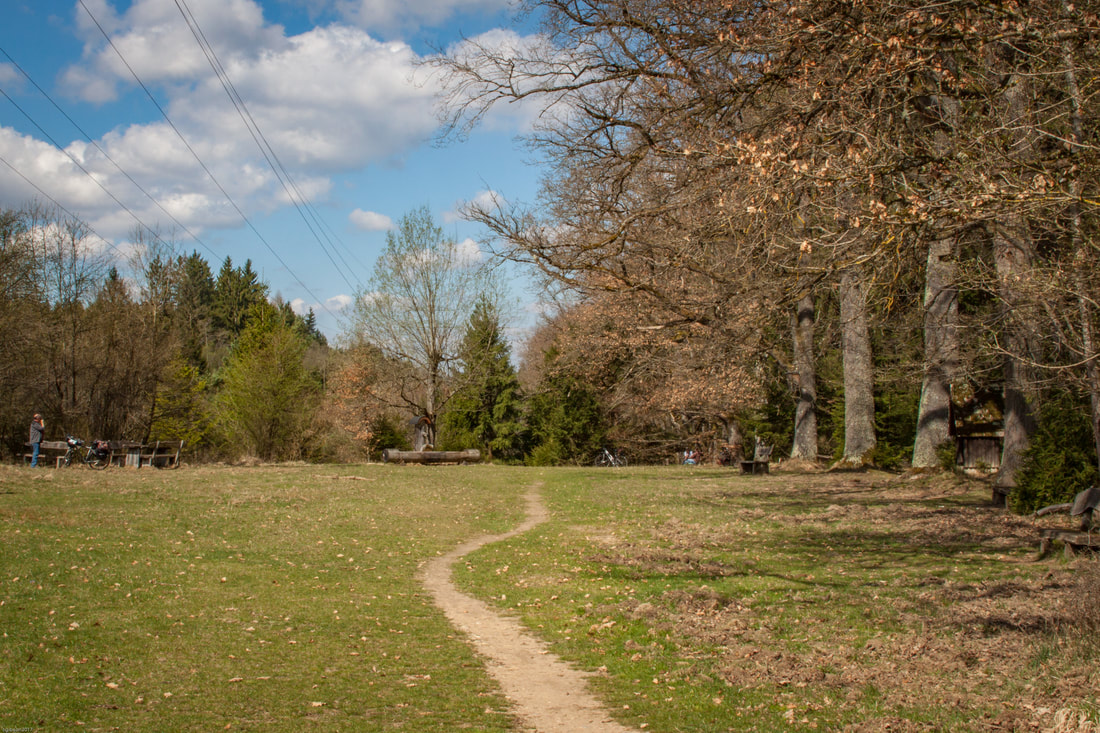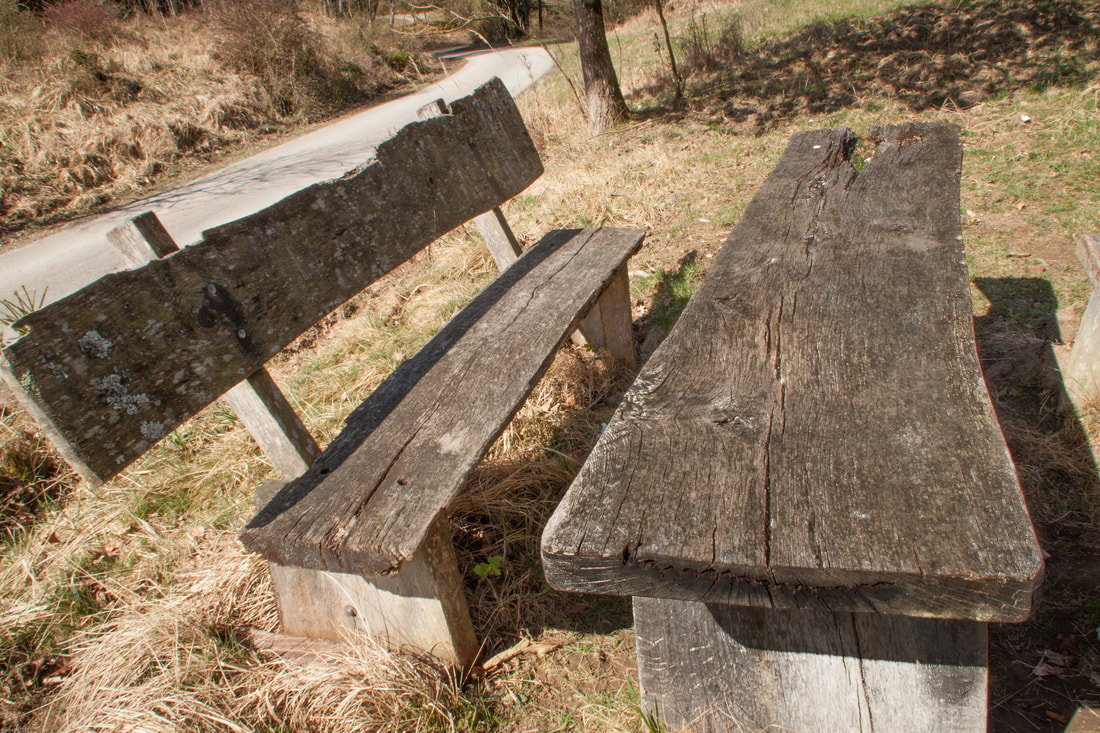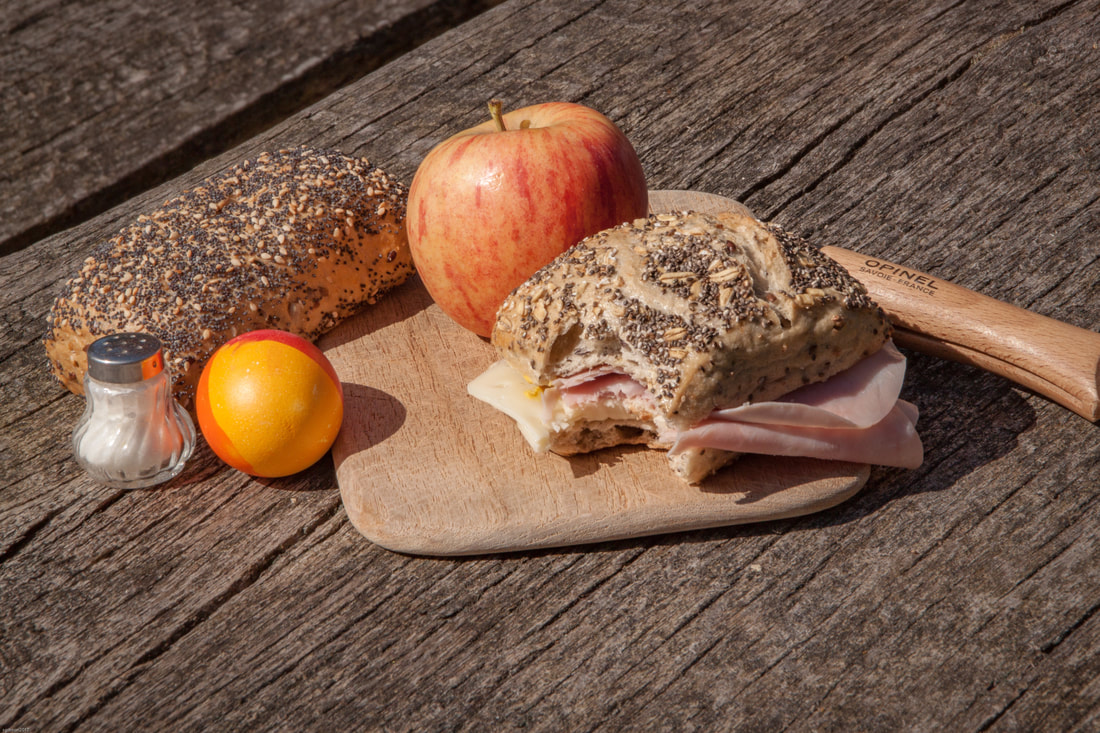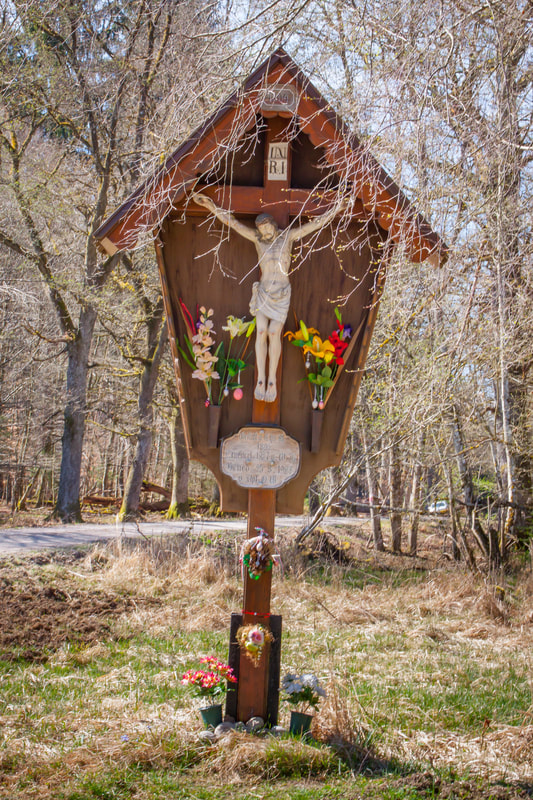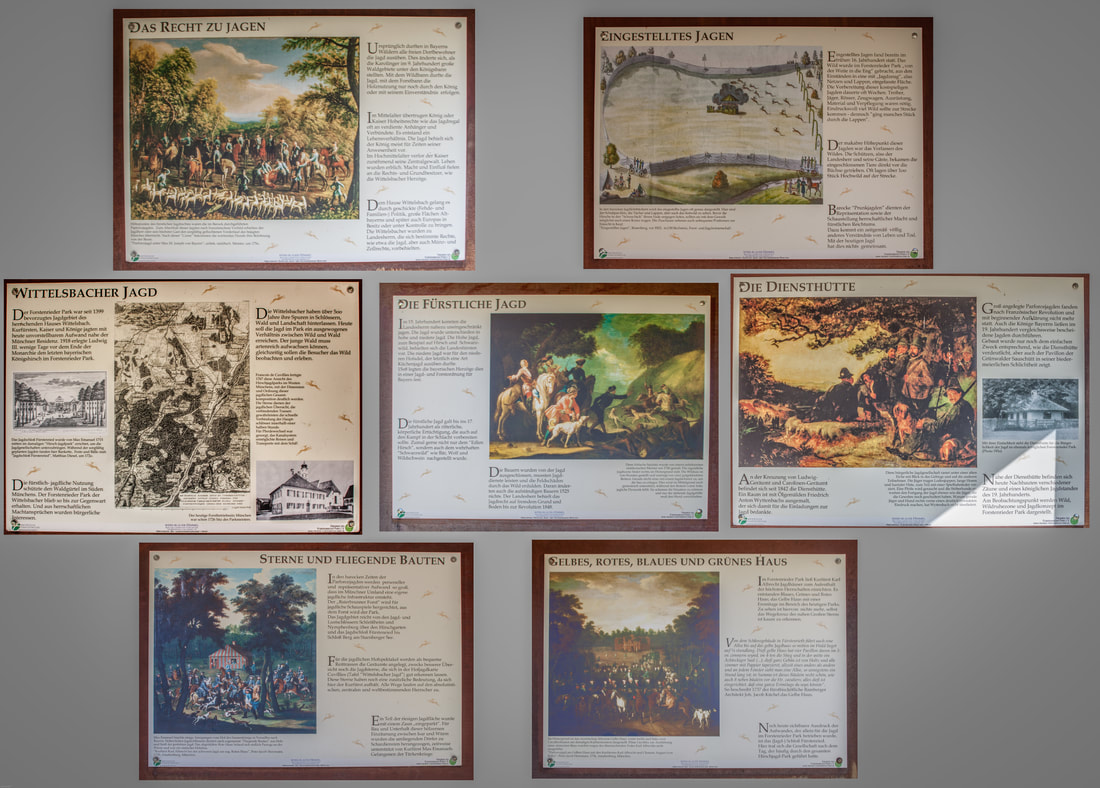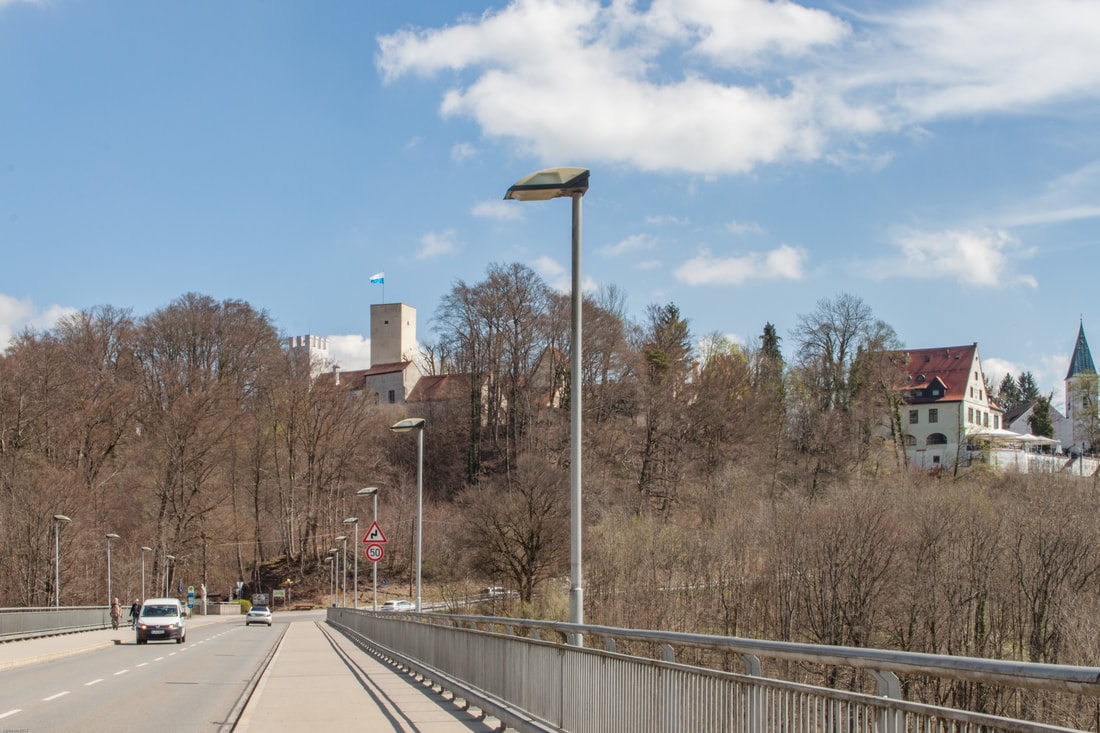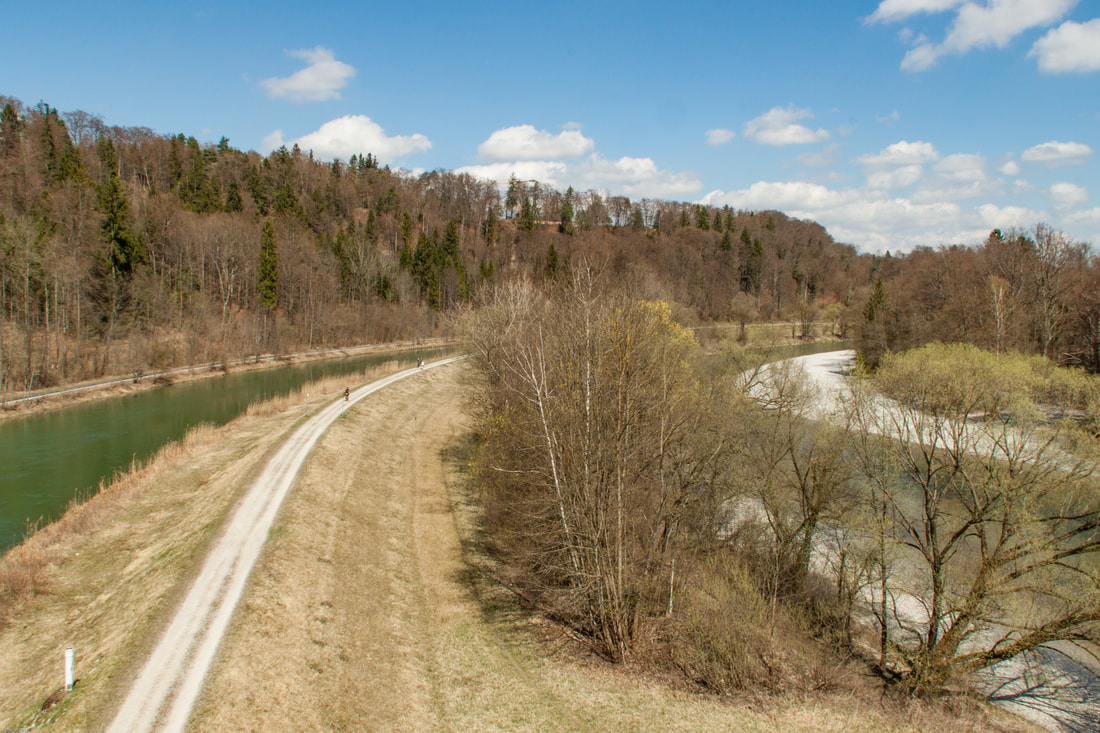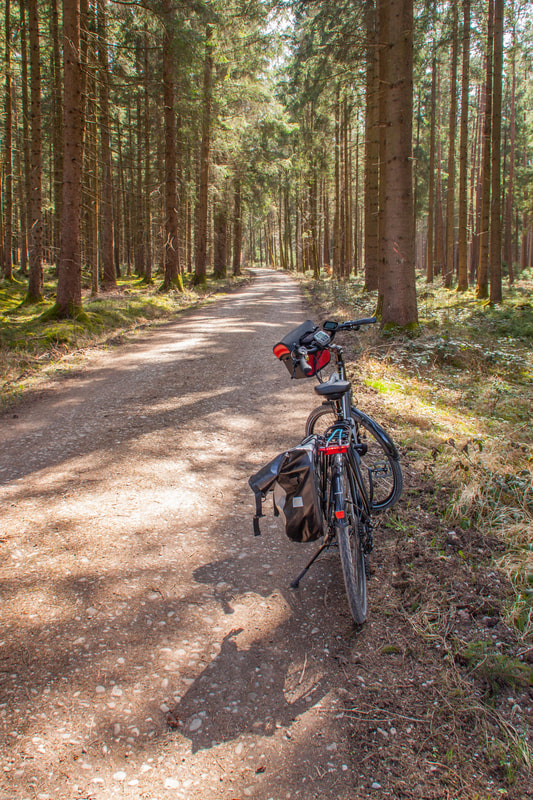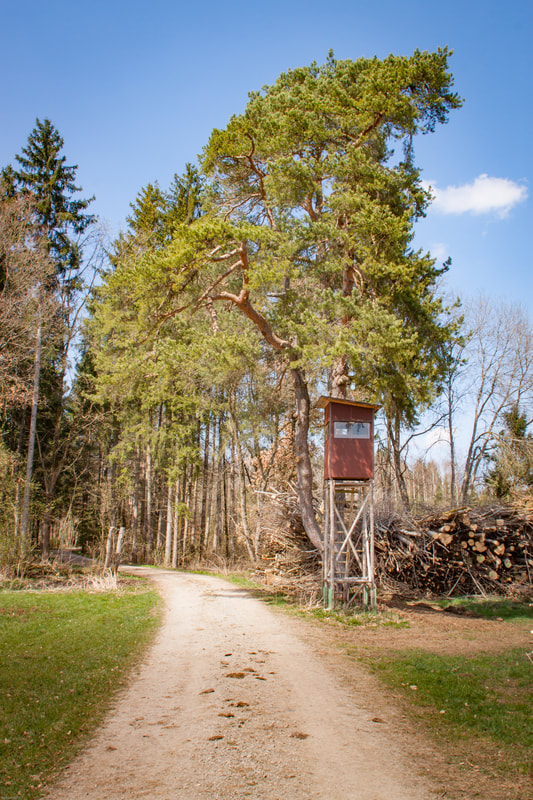Riding the end moraine ... from Gauting to Sauerlach
Wednesday April 11, 2018
We got back from our trip to Italy sooner than expected. We had been invited to a birthday celebration which unfortunately had to be called off. Then the weather surprised us by being much cooler than at home. What's worse - we didn't have our bikes with us! How can you have fun without your bike? So we drove home and found the trees had started to green and our cherry tree was in full bloom.
After a day to unpack and rest up from the drive (I find car trips terribly tiring), we were back on our bikes. The weather was gorgeous. The cherry tree next to our balcony was blooming and seemed to be saying come out and enjoy the delights of spring.
After a day to unpack and rest up from the drive (I find car trips terribly tiring), we were back on our bikes. The weather was gorgeous. The cherry tree next to our balcony was blooming and seemed to be saying come out and enjoy the delights of spring.
It was a perfect day for more circling. We caught the S-6 to Gauting, a 25-minute ride. This time we weren't the only ones with bicycles. Altogether there were five bikes and a baby carriage in our section of the train. Apparently, the warm weather is encouraging more people to ride their bikes. For some it's part of their commute to work.
From Gauting we had a nice little downhill run to the Würm River, then up again on the other side. And now a few facts, a distillation of what I found while browsing in Wikipedia:
The hilly landscape is an end moraine formation created by the glaciers of the Pleistocene Epoch or Ice Age. One of the main glaciations in the Alpine region is the Würm Complex.
And so the Würm, a small and seemingly insignificant river, more a stream, has fame attached to its name. And the hills that we struggle to pedal up are debris left from the glaciers some 12,000 years ago.
The hilly landscape is an end moraine formation created by the glaciers of the Pleistocene Epoch or Ice Age. One of the main glaciations in the Alpine region is the Würm Complex.
And so the Würm, a small and seemingly insignificant river, more a stream, has fame attached to its name. And the hills that we struggle to pedal up are debris left from the glaciers some 12,000 years ago.
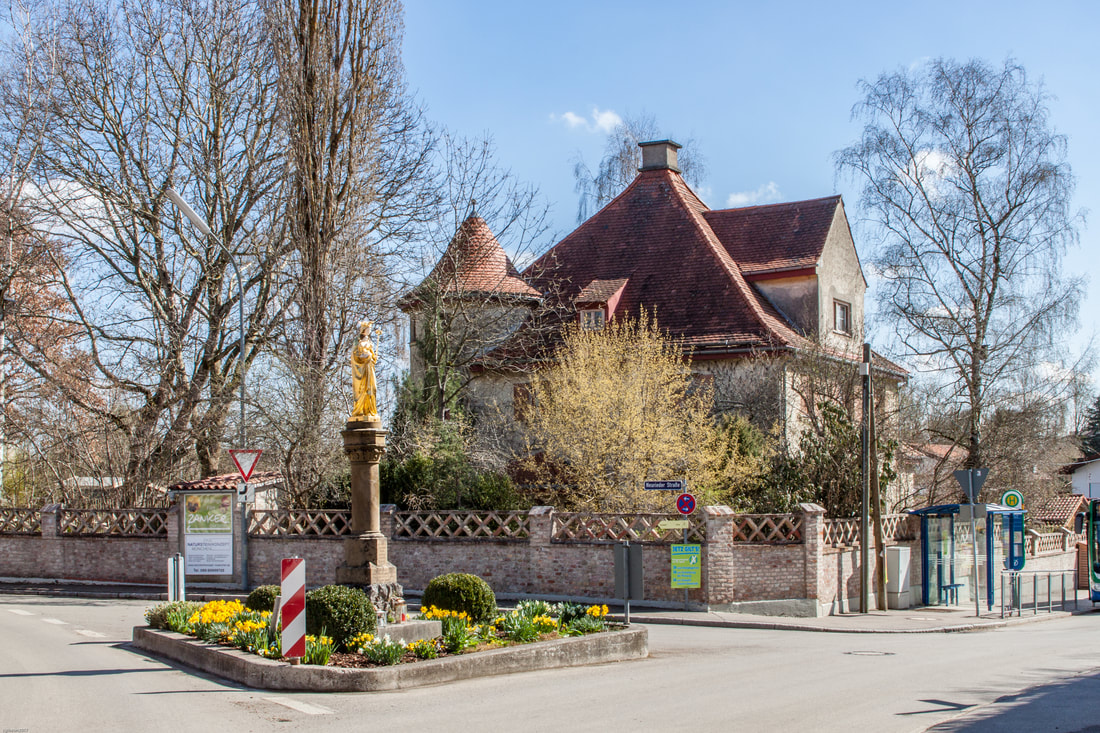
Our first photo stop was in Buchendorf. In the center is a column dedicated to the Virgin Mary. The custom of these votive pillars, common in Catholic Bavaria, dates back to the times of the Thirty Years' War and the plague, hoping Mary would intercede and ask God to show mercy in those harsh times.
A large portion of today's ride was through Forstenrieder Park.
Hunting, a right reserved for the aristocracy, was an important arena for social interaction, training for war, and a privilege and measurement of nobility.
Forstenrieder Park was once the center of feudal hunting grounds. When Duke Ludwig of Bavaria-Ingolstadt bought the "Payrbrunner Forst" in 1399, he acquired the core of a future hunting landscape for the ruling house of Wittelsbach. On the occasion when Bavaria was declared an independent kingdom, January 6, 1806, a court hunt with Napoleon took place in Forstenrieder Park. The hunting tradition of the Bavarian dukes, electors and kings came to an end on October 7, 1918, when King Ludwig III slayed a royal Bavarian stag for the last time. (Information gleaned from the internet)
Well fed and well informed, we continued on our way to the Isar. Here we had to contend with some traffic but the drivers were considerate and the traffic wasn't heavy. There aren't too many points for crossing the Isar and the bridge with a separate level for cyclists and pedestrians was too far off our route. After a couple of kilometers sharing the road we could again be off on minor roads and forest paths.
Today hunters in Germany are an elite group. To get a license, German hunters have to take roughly a year of courses. They have to train how to shoot guns with a licensed mentor. They have to pass a rigorous, four-hour exam with questions about agricultural and forestry policies, hygiene, and wildlife biology and gun use. Some say hunting helps keep deer populations in check, because most natural predators are long gone in the forests of Europe. Red deer and roe deer love to strip shoots of young trees, which can damage the forest. And the question remains - laissez faire or regulate.
I would say about half of our route today was on asphalt, half on dirt. When mapping the tour, I tried to avoid too many forest paths altlhough many of the paths through the woods in Forstenrieder Park are excellent. So I guess the moral of the story is not to try to second guess which paths will be smooth and firm, just take 'em as they come.
